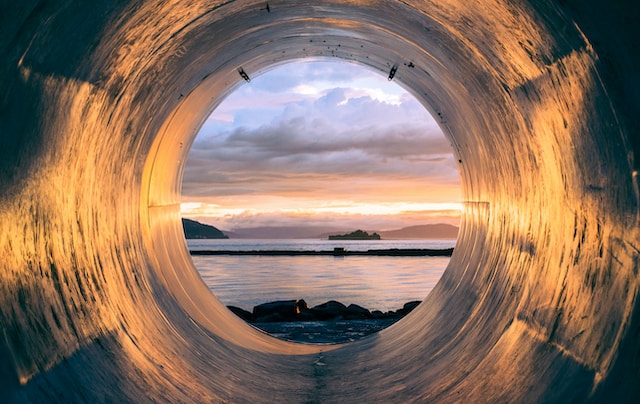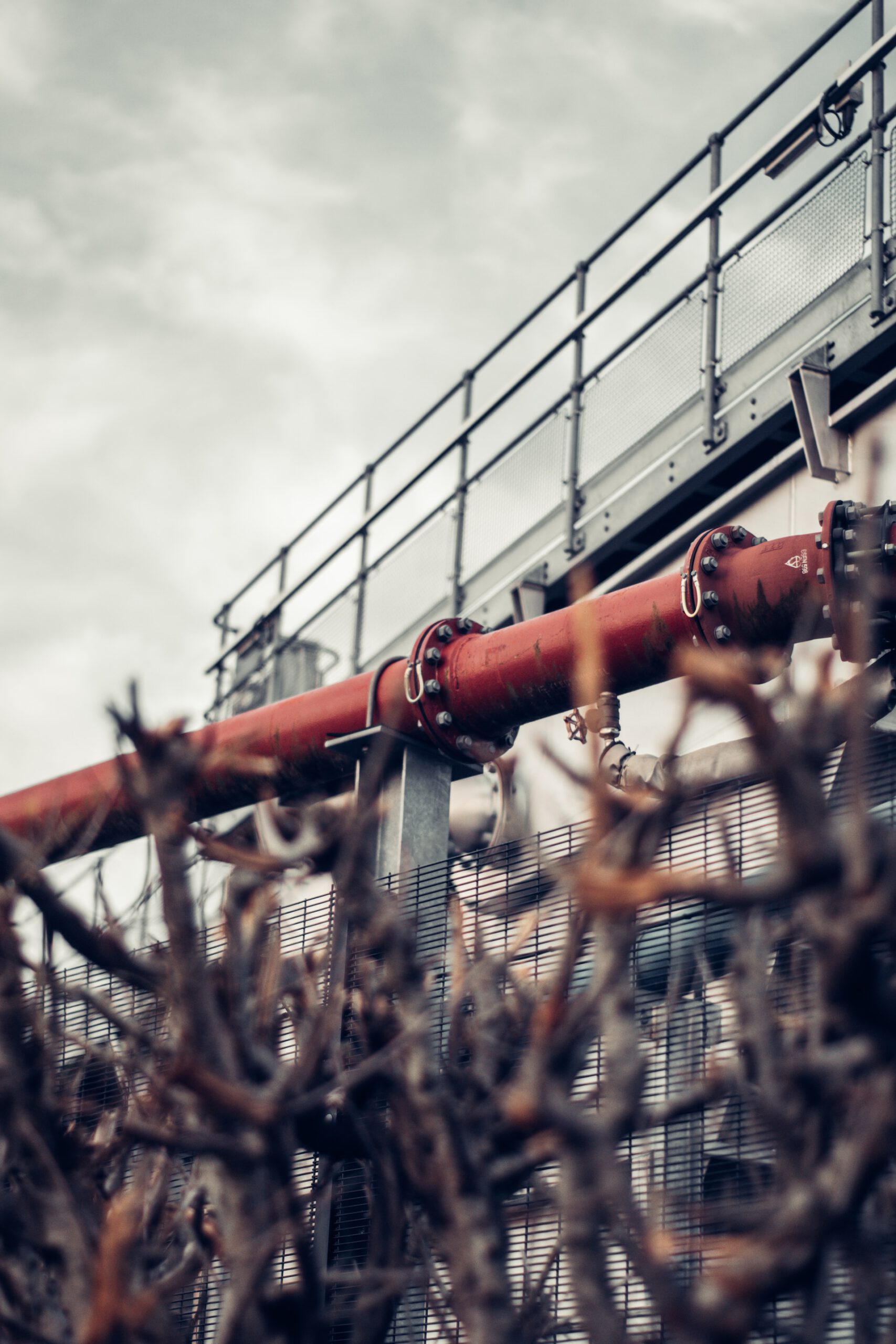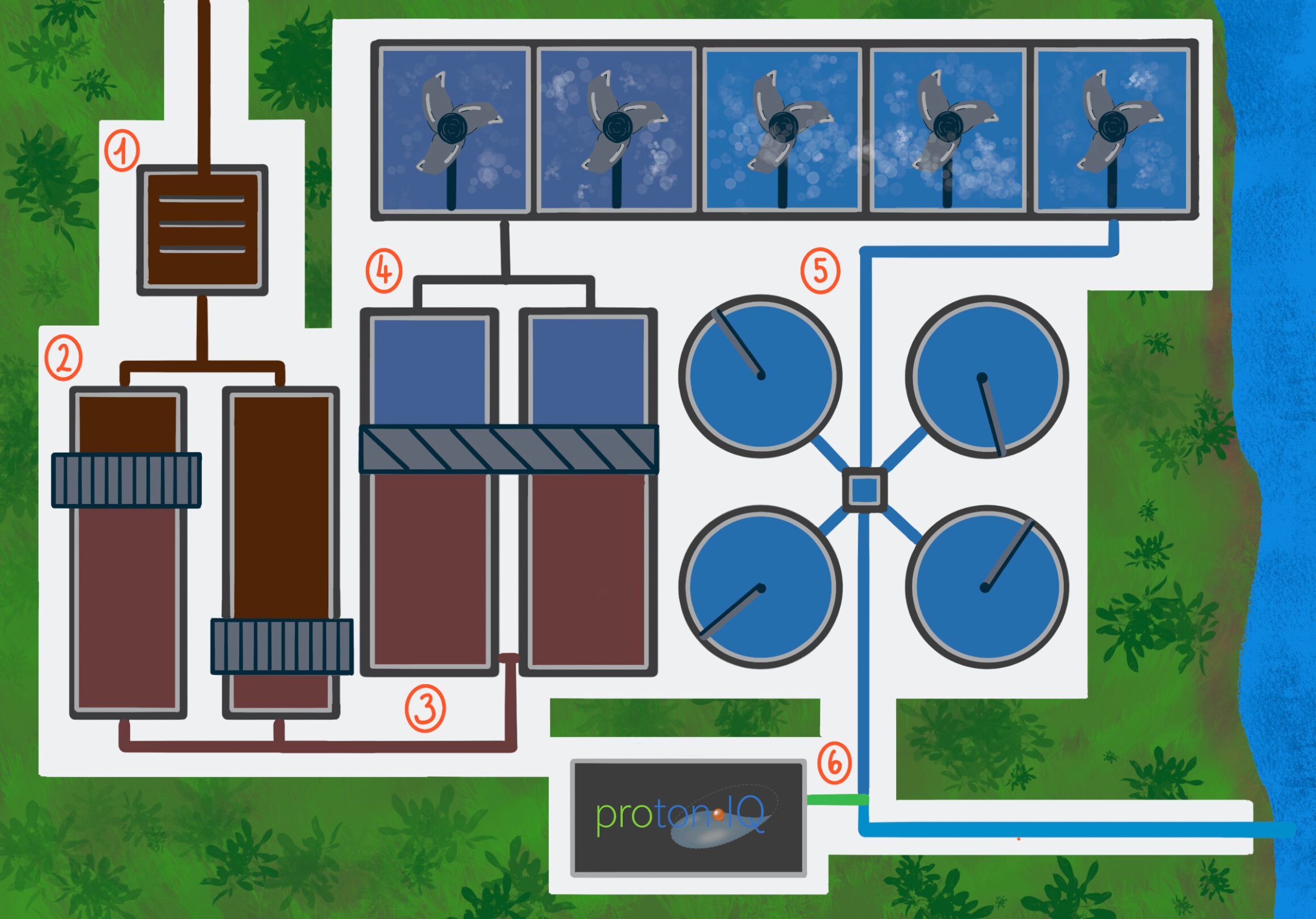Address
Vision Green Solutions GmbH
Am Mittleren Moos 48
86167 Augsburg
Business hours
Mo - Fr: 07 - 19 Uhr

Wastewater treatment equals environmental protection? Naturally, because the recirculation of untreated wastewater into the environment can have profound effects. For example illnesses such as cholera, rotavirus and typhoid can be lead back to contaminated wastewater, as can algal blooms and some fish mortality. The bacteria and contaminants in untreated wastewater can furthermore reach groundwater via seepage and strain the already scarce resource of drinking water. As you can see a good wastewater treatment is active environmental action.

Wastewater is just the water that we flush down the toilet, right? Yes and no. The flushed water is part of wastewater, so called "black water". But wastewater comprises of multiple components. "Grey water" is the rest of the water from our households. We have used it for showering, washing dishes and laundry. Industries produce a lot of wastewater too, however they often treat their wastewater themselves. They know best which contaminants they need to remove from their wastewater, since they added them in the first place. And surprisingly stormwater effluent is also wastewater. On the way into the sewage rainwater can collect all kinds of contaminants and solid waste from the streets. Since all these components of wastewater can have very different degrees of pollution, it is often sensible to collect and treat them independently. For example in Germany it is becoming a custom to have different rainwater pipes within the sewage system, because rainwater needs less treatment.
As mentioned already in the introduction, wastewater treatment is actively helping the environment, more in detail preserving our water resources. Wastewater is recirculated into the water cycle, without or with treatment. But why is this treatment so important?
Wastewater contains an entire mishmash of contaminants and pollution. If this water would reach the environment, the contaminants would have a fresh water, drinking water sources and groundwater. Contact with these contaminated sources can result in adverse effect on the human body. By treating waste water, we are inhibiting the spread of bacteria and pathogens and preventing damage to public health. Therefore wastewater treatment plays a pivotal role in the protection of public health.
Waters are sensitive ecosystems. If the balance within the ecosystem is challenges by the insertion of external substances, it can result in the reduction of fish stocks, the degradation of coral reefs and the general loss of biodiversity. Often this is caused by excessive nutrients or by harmful bacteria. A good wastewater treatment can eliminate the nutrients and the harmful bacteria. Wastewater treatment preserves biodiversity.
Now we've established why the treatment is important, we now want to find out how it works. A few consecutive steps are involved in the treatment. Each step is conducted to extract a certain group of pollutants from the water.
The first things to be removed from the water are big solids and gross contaminations via physical separation. Big solids like bottles, paper and sticks are removed with a rake. The rake is then periodically cleaned, usually automatically.
The flow velocity of the water is now reduced, usually by increasing the surface it is flowing over. Finer pollutants like sand and gravel will sink to the bottom and remain in this basin. This basin is also where most fats are retained.
The next part of this step is the so called primary clarifier. The water is retained for about 2 hours, in this time the finer suspended substances sink to the bottom. This is called sedimentation.
This step of the treatment utilises the characteristics of wastewater itself, by creating the ideal growth conditions of the bacteria living in the water. This is called the active sludge process. The water and/or sludge is aired and therefore satisfied with oxygen. The bacteria will now break down the organic matter as part of their metabolic process.
Many of these microorganisms form colonies, which sink to the bottom of the next basin, the secondary clarifier. The bacteria are partially recycled back into the activated sludge process, the rest is removed from the plant.

Infographic: Simplified Process of the way of water through the wastewater plant. 1: Rake, 2: Sand- and Fattrap, 3: Primary Clarifier, 4: Activated Sludge Process, 5: Secondary Clarifier, 6: Disinfection with proton-IQ®
The tertiary treatment removes certain substances specifically, which are still dissolved in the water. These substances can be phosphorus, nitrogen or pathogens, depending on the water that came into the plant. Many plants concentrate on phosphorus, because phosphorus is a limited resource important to agriculture and it can cause eutrophication. Therefore it is a win-win situation to extract and reuse it.
Although the recycling of phosphorus is important, we don't want to concentrate on that. We are dedicated to an entirely different aspect: the disinfection of the effluent before recirculation. The elimination of microorganisms that would otherwise harm people, animals and ecosystems. Only including a disinfection step can wastewater effluent be free of harmful bacteria and pathogens before reentering the environment. Now the the recirculation can be safe and the spreading of pathogens can be stopped.
Water is our passion. That is why we are selling more than a product. Together with the client, we are answering the questions of what is needed, how do we overcome the challenges. And we will find a holistic solutions for the disinfection of the effluent. This is how we manage fluctuating flow rates as well as remote locations. Our goal is that no wastewater is recirculated without a disinfection step.
Our proton-IQ® eliminates with minimal chemical input effectively and safely bacteria and even viruses. Because of the low input of disinfectant there is no need to remove the disinfectant before recirculation. The effluent can be reintroduced into the environment directly. Effortlessly on the side the production is based on the demand of the disinfection, which makes it energy efficient and eco friendly, all while securing the plant with disinfection.
More about our solution you can find here.
The amount of wastewater rises with the consumption of water. In Germany 90% of all wastewater is treated. In communal wastewater treatment plants or in plants directly within industry. But this is not a given. Many bodies of waters are contaminated because of insufficient treatment or no treatment at all. The less water we use, if industrially or at home, the less wastewater is created. The biggest water protects is therefore using our most important resource sparingly.
For everyone who wants to find out more, here are some interesting sources:
Bildquellen: Header: Foto von Erlend Ekseth on Unsplash, Was ist Abwasser: Foto von Harry Shelton on Unsplash